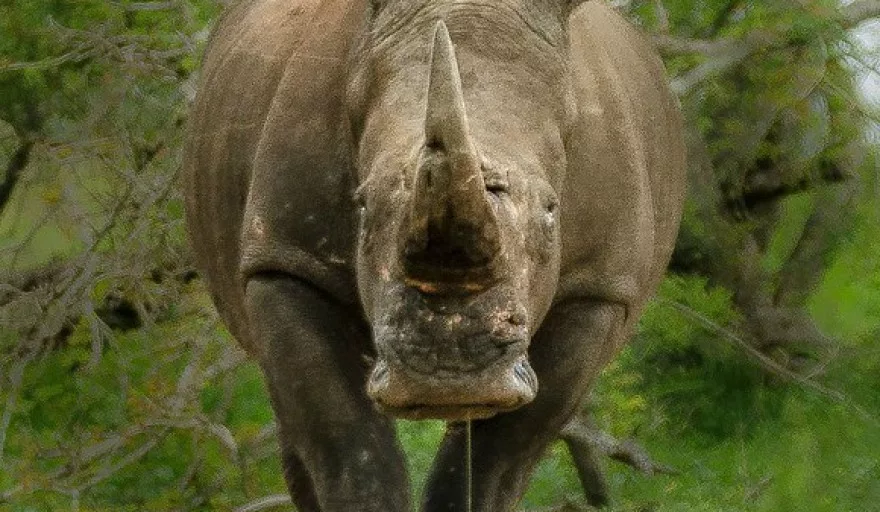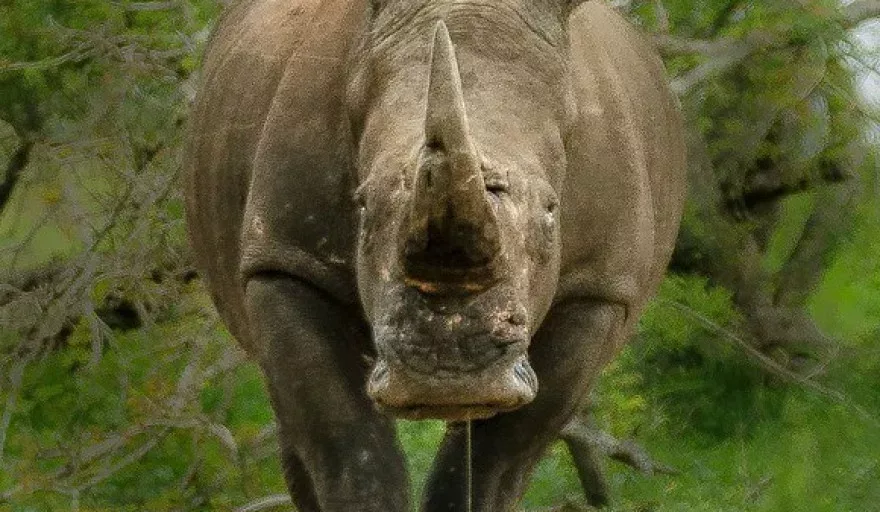
“Coming from South Africa, growing up surrounded by majestic animals and the exquisite plains of the African continent, seeing the destruction that poaching has imposed on my country and the region is a gruesome atrocity.”
Colleen Glaeser, Head of Global Marketing and the southern African region at security and intelligence company AxxonSoft, is a leading advocate of the increasingly prominent anti-poaching campaign.
“Our beautiful wildlife is intertwined in our African heritage and identity,” says Glaeser, also the owner of a luxury safari lodge. “Indeed, the protection of wildlife is very close to my heart.”
Despite increasing efforts to tackle poaching by raising investment and awareness, incidents have soared in the past decade, particularly evident in the increasing attacks on rhinos.
In 2007, when just 13 rhinos were killed for human benefit in total across South Africa, it seemed that poaching was on its way to being eradicated. However, driven by a resurgence in demand for rhino horn, now three times more valuable than gold, more than 1,000 rhinos have been killed in each of the previous five years across South Africa alone.
Shockingly, the world’s total Black Rhino population is now down by 97.6% since 1960.
With South Africa home to about 80 percent of the world’s 29,000 remaining rhinos, these numbers are unquestionably unsustainable, and at current rates, these animals and other critically endangered species that are also subject to the brutality of poachers will be extinct within our lifetime.
“If we don’t do something drastic soon, the fate of these magnificent animals is worrisome,” Glaeser warns.
A proactive approach
With extensive expertise in the security and surveillance industry, and a working knowledge of the revolutionary capabilities that emerging technologies have to offer, Glaeser is leading AxxonSoft’s efforts in tackling the poaching endemic across Africa.
AxxonSoft is renowned as one of the world’s leading visual management solutions (VMS) and physical security information management (PSIM) solutions within the security market, having established such a status through its continual pursuit of innovation.
As a result, the Company’s extensive development of security-centric disruptive technologies has ideally positioned it to tackle this problem – something that Glaeser saw the opportunity for.
“With the backing of AxxonSoft, I decided to implement advanced technology to provide a safer environment for these animals across the region,” she says. “As I have been in the security and surveillance industry for the past 25 years, I knew that I had to use my knowledge and expertise to create proactive technology that can aid and impact the antipoaching initiative.”
Previously used anti-poaching technologies focused on protecting the external perimeter of wildlife parks where endangered species reside using more traditionally applied security systems. However, with animals frequently bumping into these monitored fences, triggering false alarms, such defences proved to be inaccurate, often resulting in the real threats being missed.
However, through the implementation of machine learning-powered deep learning capabilities and the creation of neural networks, AxxonSoft’s new technology is able to identify the difference between animal and human activity.
Using cameras and systems that are adept with this technology, surveillance teams are notified with precise information in a more efficient manner. With improved insights, anti-poaching teams are able to readily and accurately prevent poaching attacks and detain criminals using AxxonSoft’s AI systems.
“Due to expansive plains and limited resources, anti-poaching programmes in the past have normally been very reactive, with devastating results,” Glaeser explains. “However, by incorporating deep learning and neural networks into parks and reserves across southern Africa, we have been able to take a proactive approach, identifying the threat in a real time situation.
“We really believe this anti-poaching solution can aid in the war against poaching and drastically bring down the upsetting statistics.”
Reducing the risks
Whilst anti-poaching initiatives are centred around saving the animals that are put at risk, this risk is transferred to those spearheading the movement on the ground who jeopardise their own lives on the front-line day in, day out.
Tragically, between 2009-2017 a total 740 fatalities of anti-poaching rangers occurred in the line of duty. However, Glaeser explains that this technology will aim to help protect not only the animals, but also the rangers themselves by reducing error and providing greater specifics.
“Due to the expansive and often dense terrain in which these animals live, it can be very difficult to monitor poaching with rangers alone,” she says. “However, this new technology will be not only fundamental in targeting poaching rings, but also for the safety of our rangers.
“It is quick, efficient and safe.”
In summary, both Glaeser and AxxonSoft are hoping to see major improvements in all aspects of the battle against poaching through the use of this technology. Working with multiple game reserves and parks across Africa, the technology is already paying dividends and is expected to continue to do so moving forward.
“We can attest to the fact that we have seen great success in curbing poaching by utilising this technology thus far and look forward to seeing great results as we take this programme forward,” Glaeser concludes.





















